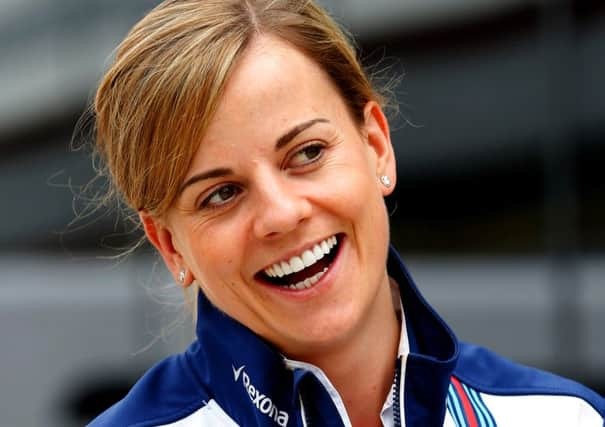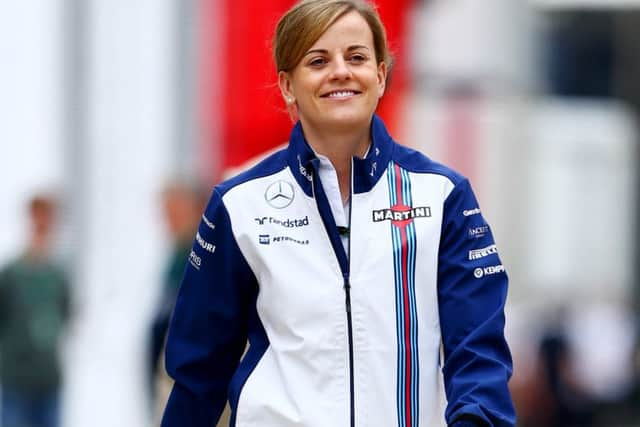Susie Wolff ‘not sorry’ for using gender in F1 bid


Susie, 32, is bidding to become the first woman to race in Formula 1 for 40 years and believes she is “on the cusp” of making the grade.
She is a development driver for Williams and has driven for the team during practice sessions at races, most recently at the Spanish Grand Prix in May.
Advertisement
Hide AdAdvertisement
Hide AdSusie has posed for a number of revealing photo shoots and said the attention had helped her with her sponsorship and funding.


The Oban-born race ace insisted she is happy to use her position as an attractive woman in a man’s sport in order to get ahead.
She said: “I make no apology for having used gender as a unique selling point in my career.
“Why should a woman deny her femininity just to conform with the expectations of the racing world?
“I’m a woman, I drive racing cars and if there’s an advantage in terms of finding sponsorship or support, then I will make the most of it.
“That’s what racing is all about: finding competitive advantage and exploiting it.
“That can open new doors for me and other female racers, which is great. But then we have to stand or fall based on our ability.”
Susie, who is married to Mercedes team boss Toto Wolff, told how she wants to inspire a generation of young women to participate in motorsport.
Advertisement
Hide AdAdvertisement
Hide AdShe said: “When I look at the steps I have taken in my career, they have been all about getting a foot in the door and grasping that opportunity.
“Of course, there is a physiological aspect to the debate, because on average women have 30 per cent less muscle than men. But I did a full race distance in the pre-season test in Barcelona and showed it could be done.
“I am 100 per cent convinced that there is no physical impediment to women racing in F1.
“Now, I am right on the cusp of breaking onto that starting grid.
“If I can’t be the woman to break through the glass ceiling, then I want to be involved in making it happen for the person who does.
“When I began racing, I wasn’t comfortable with the idea of being a role model, because I still had everything to prove as a driver. Now, social media connects me with people around the world and the positive response is amazing.
“There are little girls in onesies who want to be F1 drivers ‘like Susie Wolff’ and young women hunting for career opportunities in engineering schemes with F1 teams.
“I feel I have a responsibility to pass on the lessons I have learned, to help young women avoid some of my mistakes and to provide inspiration for them to chase the same dream.
Advertisement
Hide AdAdvertisement
Hide Ad“Female participation in F1 is changing mindsets in a positive way. The more little girls and young women start racing, the more opportunities they will have at the top level.”
Italian Lella Lombardi was the last woman to race a Formula 1 car - in 1976.
The last woman to enter a Formula 1 grand prix was Italian Giovanna Amati, but she failed to qualify for three races at the start of the 1992 season before being dropped by Brabham.
Wolff started racing aged just eight and alongside her older brother David, spent countless weekends watching her father compete before deciding to give kart-racing a go herself.